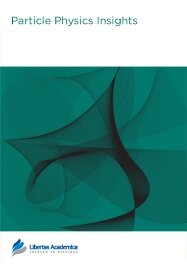

Publication Date: 31 Aug 2011
Type: Hypothesis
Journal: Particle Physics Insights
Citation: Particle Physics Insights 2011:4 19-23
doi: 10.4137/PPI.S7961

The mass of a proton is an important fundamental constant, but a logical rational for its mass is unknown. This paper demonstrates a method to accurately and logically derive the frequency equivalent of the mass of a proton, vp, from frequency equivalents of the masses of a neutron and electron, the Bohr radius, and the ionization energy of hydrogen. The hypothesis is that the fundamental constants are all related to annihilation frequency of the neutron (vn) which is the fundamental frequency. The hypothesis states that the fundamental constants must be related to simple linear relationships on the ln ln planes based solely on the slopes and intercepts of two lines related to hydrogen, the weak kinetic line (electron, and Bohr radius), and the electromagnetic line (Planck constant, and ionization energy of hydrogen). The mass of the proton can be derived by subtracting the components lost in the beta decay process from vn. Each n is a principal quantum number and associated with at least one fundamental constant including the primes: 7, electron, 5, Bohr radius, 3, ionization energy, and 2, neutrino. The total kinetic energy lost in the beta decay process is related to the other principal quantum numbers which are not primes including 4, 6, and 8. There is a 2nd factor related to the principal quantum number 5 utilizing all of the slopes and intercepts of the two hydrogen lines. vn minus the sum of these lost frequency equivalents is 2.26873187 × 1023 Hz. vp is 2.26873183 × 1023 Hz. The relative error is 2 × 10-8. The derived mass equivalent of a proton is 1.67262166 × 10-27 kg. The relative error is 2 × 10-8. The known proton mass is 1.6726216 × 10-27 kg. The known relative error is 5 × 10-8 kg.
PDF (523.35 KB PDF FORMAT)
RIS citation (ENDNOTE, REFERENCE MANAGER, PROCITE, REFWORKS)
BibTex citation (BIBDESK, LATEX)

Bioinformatics and Biology Insights helps to reach all people with the latest results on research which directly helps them and with their needs. Three of our co-authors are from Burkina Faso, the malaria holoendemic region our research is based on, and serving as motivation for all our efforts for better treatment of malaria. It is good to be social and it is good to promote science world-wide through open access.
Facebook Google+ Twitter
Pinterest Tumblr YouTube